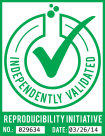CD4 Antikörper (AA 385-457)
-
- Target Alle CD4 Antikörper anzeigen
- CD4
-
Bindungsspezifität
- AA 385-457
-
Reaktivität
- Human, Maus, Ratte, Huhn, Schwein
-
Wirt
- Kaninchen
-
Klonalität
- Polyklonal
-
Konjugat
- Dieser CD4 Antikörper ist unkonjugiert
-
Applikation
- Flow Cytometry (FACS), Western Blotting (WB), ELISA, Immunohistochemistry (Frozen Sections) (IHC (fro)), Immunohistochemistry (Paraffin-embedded Sections) (IHC (p)), Immunofluorescence (Cultured Cells) (IF (cc)), Immunofluorescence (Paraffin-embedded Sections) (IF (p))
- Kreuzreaktivität
- Huhn, Human, Maus, Schwein, Ratte
- Homologie
- Dog,Cow,Sheep,Guinea Pig
- Aufreinigung
- Purified by Protein A.
- Immunogen
- KLH conjugated synthetic peptide derived from Human CD4 (cytoplasmic domain)
- Isotyp
- IgG
-
-
- Applikationshinweise
-
WB 1:300-5000
ELISA 1:500-1000
FCM 1:20-100
IHC-P 1:200-400
IHC-F 1:100-500
IF(IHC-P) 1:50-200
IF(IHC-F) 1:50-200
IF(ICC) 1:50-200 - Beschränkungen
- Nur für Forschungszwecke einsetzbar
-
- by
- Confocal Imaging Core, Beth Israel Deaconess Medical Center
- No.
- #029634
- Datum
- 26.03.2014
- Antigen
- Chargennummer
- 130703
- Validierte Anwendung
- Immunohistochemistry
- Positivkontrolle
- Mouse spleen tissue
- Negativkontrolle
- Mouse muscle tissue
- Bewertung
- Signal was detected in positive control sample and not in negative control sample.
- Primärantikörper
- Antibody: CD4 Molecule (CD4)
- Catalog number: ABIN671376
- Lot number: 130703
- Sekundärantikörper
- Antibody: Donkey anti-Rabbit IgG Antibody (Biotinylated)
- Full Protocol
- Immunohistochemistry was performed manually.
- Sections were deparaffinized and rehydrated.
- Sections were heated to 98°C for 10 min in 0.1M Borate buffer with 1 mM NaCl and 1 mM EDTA pH 8.0 for antigen retrieval.
- Sections were incubated in 3% hydrogen peroxide for 10 min at room temperature to block endogenous peroxidases.
- Sections were washed x 3 in Tris buffered saline (TBS).
- Sections were blocked in 5 % normal donkey serum for 60 min at room temperature.
- Sections were incubated with primary antibody diluted 1:200 in 5% normal donkey serum in TBS. Incubated at 4°C temperature overnight.
- Sections were washed x 3 in Tris buffered saline.
- Sections were incubated with secondary antibody diluted 1:400 in 5% normal donkey serum in TBS. Incubated for 60 min at room temperature..
- Sections were washed x 3 in Tris buffered saline.
- Sections were incubated with Vectastain ABC kit (Vector Lab PK6100) to enhance signal.
- Sections were incubated with DAB chromogenic substrate (Vector Lab SK-4105) for 60 sec at RT.
- Sections were washed x 3 in Distilled Water.
- Sections were counterstained with hematoxylin for 20 sec.
- Sections were washed x 1 in Distilled Water.
- Sections were dehydrated, mounted and photographed under a Zeiss AxioImager M1 light microscope.
- Anmerkungen
- - No experimental challenges noted.
Validierung #029634 (Immunohistochemistry)![Erfolgreich validiert 'Independent Validation' Siegel]()
![Erfolgreich validiert 'Independent Validation' Siegel]() ValidierungsbilderProtokoll
ValidierungsbilderProtokoll -
- Format
- Liquid
- Konzentration
- 1 μg/μL
- Buffer
- 0.01M TBS( pH 7.4) with 1 % BSA, 0.02 % Proclin300 and 50 % Glycerol.
- Konservierungsmittel
- ProClin
- Vorsichtsmaßnahmen
- This product contains ProClin: a POISONOUS AND HAZARDOUS SUBSTANCE, which should be handled by trained staff only.
- Lagerung
- 4 °C,-20 °C
- Informationen zur Lagerung
- Shipped at 4°C. Store at -20°C for one year. Avoid repeated freeze/thaw cycles.
- Haltbarkeit
- 12 months
-
-
: "Reolysin and Histone Deacetylase Inhibition in the Treatment of Head and Neck Squamous Cell Carcinoma." in: Molecular therapy oncolytics, Vol. 5, pp. 87-96, (2017) (PubMed).
: "Bone morphogenetic protein 7 is associated with the nodal invasion of colon cancer." in: Oncology letters, Vol. 11, Issue 3, pp. 1707-1712, (2016) (PubMed).
: "Does prolonged post-mortem cold ischemic harvesting time influence cryopreserved pulmonary homograft tissue integrity?" in: Cell and tissue banking, (2015) (PubMed).
-
: "Reolysin and Histone Deacetylase Inhibition in the Treatment of Head and Neck Squamous Cell Carcinoma." in: Molecular therapy oncolytics, Vol. 5, pp. 87-96, (2017) (PubMed).
-
- Target
- CD4
- Andere Bezeichnung
- CD4 (CD4 Produkte)
- Hintergrund
-
Synonyms: T-cell surface glycoprotein CD4, Cd4, T-cell surface antigen T4/Leu-3, W3/25 antigen
Background: Integral membrane glycoprotein that plays an essential role in the immune response and serves multiple functions in responses against both external and internal offenses. In T-cells, functions primarily as a coreceptor for MHC class II molecule:peptide complex. The antigens presented by class II peptides are derived from extracellular proteins while class I peptides are derived from cytosolic proteins. Interacts simultaneously with the T-cell receptor (TCR) and the MHC class II presented by antigen presenting cells (APCs). In turn, recruits the Src kinase LCK to the vicinity of the TCR-CD3 complex. LCK then initiates different intracellular signaling pathways by phosphorylating various substrates ultimately leading to lymphokine production, motility, adhesion and activation of T-helper cells. In other cells such as macrophages or NK cells, plays a role in differentiation/activation, cytokine expression and cell migration in a TCR/LCK-independent pathway. Participates in the development of T-helper cells in the thymus and triggers the differentiation of monocytes into functional mature macrophages.
- Gen-ID
- 24932
- UniProt
- P01730
- Pathways
- T-Zell Rezeptor Signalweg, Maintenance of Protein Location, CXCR4-mediated Signaling Events
-

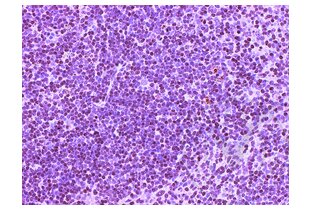
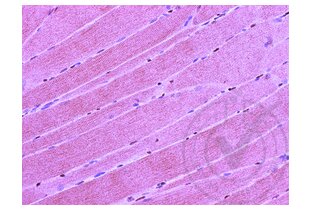
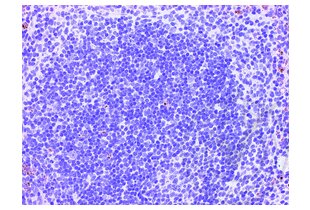
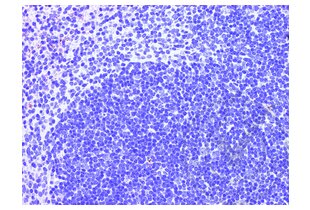
 (4 Referenzen)
(4 Referenzen) (1 Validierung)
(1 Validierung)